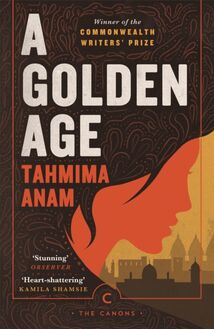Edge of the Sea , livre ebook
166
pages
English
Ebooks
2021
Vous pourrez modifier la taille du texte de cet ouvrage
Obtenez un accès à la bibliothèque pour le consulter en ligne En savoir plus
Découvre YouScribe en t'inscrivant gratuitement
Découvre YouScribe en t'inscrivant gratuitement
166
pages
English
Ebooks
2021
Vous pourrez modifier la taille du texte de cet ouvrage
Obtenez un accès à la bibliothèque pour le consulter en ligne En savoir plus
Publié par
Date de parution
03 juin 2021
Nombre de lectures
1
EAN13
9781786899156
Langue
English
Poids de l'ouvrage
4 Mo
Publié par
Date de parution
03 juin 2021
Nombre de lectures
1
EAN13
9781786899156
Langue
English
Poids de l'ouvrage
4 Mo
The Edge of the Sea
Rachel Carson (1907–1964) was an American marine biologist. She is the New York Times bestselling author of the Sea trilogy: The Sea Around Us (winner of the National Book Award and the John Burroughs Medal), Under the Sea-Wind and The Edge of the Sea ; as well as the seminal Silent Spring . Her books have been credited with advancing the global environmental movement.
Also by Rachel Carson
The Sea Around Us
Under the Sea-Wind
Silent Spring
The Edge of the Sea
Rachel Carson
Introduced by
Margaret Atwood
with illustrations by Bob Hines
The Canons edition published in Great Britain in 2021 by Canongate Books Ltd, 14 High Street, Edinburgh EH1 1TE
canongate.co.uk
This digital edition first published in 2021 by Canongate Books
First published in the United States by Houghton Mifflin & Co. in 1955
Text copyright © 1955 by Rachel L. Carson Text copyright © renewed 1983 by Roger Christie Introduction © 2021 by O.W. Toad Ltd Illustrations copyright © 1955 by Robert W. Hines Illustrations copyright © renewed 1983 by Robert W. Hines
The right of Rachel Carson to be identified as author of this work has been asserted by her in accordance with the Copyright, Designs and Patents Act 1988
British Library Cataloguing-in-Publication Data A catalogue record for this book is available on request from the British Library
ISBN 978 1 78689 914 9 eISBN 978 1 78689 915 6
Parts of this book first appeared in The New Yorker.
To Dorothy and Stanley Freeman
who have gone down with me into the low-tide world and have felt its beauty and its mystery.
Contents
Acknowledgments
Preface
Introduction by Margaret Atwood
I The Marginal World
II Patterns of Shore Life
III The Rocky Shores
IV The Rim of Sand
V The Coral Coast
VI The Enduring Sea
Appendix: Classification
Acknowledgments
O UR UNDERSTANDING of the nature of the shore and of the lives of sea animals has been acquired through the labor of many hundreds of people, some of whom have devoted a lifetime to the study of a single group of animals. In my researches for this book I have been deeply conscious of the debt of gratitude we owe these men and women, whose toil allows us to sense the wholeness of life as it is lived by many of the creatures of the shore. I am even more immediately aware of my debt to those I have consulted personally, comparing observations, seeking advice and information and always finding it freely and generously given. It is impossible to express my thanks to all these people by name, but a few must have special mention. Several members of the staff of the United States National Museum have not only settled many of my questions but have given invaluable advice and assistance to Bob Hines in his preparation of the drawings. For this help we are especially grateful to R. Tucker Abbott, Frederick M. Bayer, Fenner Chace, the late Austin H. Clark, Harald Rehder, and Leonard Schultz. Dr. W. N. Bradley of the United States Geological Survey has been my friendly advisor on geological matters, answering many questions and critically reading portions of the manuscript. Professor William Randolph Taylor of the University of Michigan has responded instantly and cheerfully to my calls for aid in identifying marine algae, and Professor and Mrs. T. A. Stephenson of the University College of Wales, whose work on the ecology of the shore has been especially stimulating, have advised and encouraged me in correspondence. To Professor Henry B. Bigelow of Harvard University I am everlastingly in debt for encouragement and friendly counsel over many years. The grant of a Guggenheim Fellowship helped finance the first year of study in which the foundations of this book were laid, and some of the field work that has taken me along the tide lines from Maine to Florida.
Argonaut egg cases
Preface
L IKE THE SEA ITSELF , the shore fascinates us who return to it, the place of our dim ancestral beginnings. In the recurrent rhythms of tides and surf and in the varied life of the tide lines there is the obvious attraction of movement and change and beauty. There is also, I am convinced, a deeper fascination born of inner meaning and significance.
When we go down to the low-tide line, we enter a world that is as old as the earth itself—the primeval meeting place of the elements of earth and water, a place of compromise and conflict and eternal change. For us as living creatures it has special meaning as an area in or near which some entity that could be distinguished as Life first drifted in shallow waters—reproducing, evolving, yielding that endlessly varied stream of living things that has surged through time and space to occupy the earth.
To understand the shore, it is not enough to catalogue its life. Understanding comes only when, standing on a beach, we can sense the long rhythms of earth and sea that sculptured its land forms and produced the rock and sand of which it is composed; when we can sense with the eye and ear of the mind the surge of life beating always at its shores—blindly, inexorably pressing for a foothold. To understand the life of the shore, it is not enough to pick up an empty shell and say “This is a murex,” or “That is an angel wing.” True understanding demands intuitive comprehension of the whole life of the creature that once inhabited this empty shell: how it survived amid surf and storms, what were its enemies, how it found food and reproduced its kind, what were its relations to the particular sea world in which it lived.
The seashores of the world may be divided into three basic types: the rugged shores of rock, the sand beaches, and the coral reefs and all their associated features. Each has its typical community of plants and animals. The Atlantic coast of the United States is one of the few in the world that provide clear examples of each of these types. I have chosen it as the setting for my pictures of shore life, although—such is the universality of the sea world—the broad outlines of the pictures might apply on many shores of the earth.
I have tried to interpret the shore in terms of that essential unity that binds life to the earth. In Chapter I, in a series of recollections of places that have stirred me deeply, I have expressed some of the thoughts and feelings that make the sea’s edge, for me, a place of exceeding beauty and fascination. Chapter II introduces as basic themes the sea forces that will recur again and again throughout the book as molding and determining the life of the shore: surf, currents, tides, the very waters of the sea. Chapters III, IV, and V are interpretations, respectively, of a rocky coast, the sand beaches, and the world of the coral reefs.
The drawings by Bob Hines have been provided in abundance so the reader may gain a sense of familiarity with the creatures that move through these pages, and may also be helped to recognize those he meets in his own explorations of the shore. For the convenience of those who like to pigeonhole their findings neatly in the classification schemes the human mind has devised, an appendix presents the conventional groups, or phyla, of plants and animals and describes typical examples. Each form mentioned in the book itself is listed under its Latin as well as its common name in the index.
Introduction by Margaret Atwood
The oceans are the living heart and lungs of our planet. They produce most of the oxygen in our atmosphere, and through their circulating currents they control climate. Without healthy oceans, we land-dwelling, air-breathing mid-sized primates will die.
The republication of Rachel Carson’s first three books—all of them about the sea—marks a new, widespread recognition of these facts. When Rachel Carson was writing these books, in the late thirties, the forties, and the fifties, a number of things that are now realities in our world had not yet happened. There were warning signs, but these warnings were only glimmers. Few were aware that we had entered the age of the Sixth Great Extinction. The nascent climate crisis had not impacted public consciousness. Large-scale industrial fishing was just beginning, and the cod stocks of the Grand Banks of Newfoundland had not yet crashed due to overfishing. Other fish populations were not being decimated due to devastating bycatch. The regenerative biosystems of the continental shelves had not yet been wrecked by draggers. The coral reefs were not yet bleaching. “Ghost nets” made of plastic rope were not drifting around in the oceans, entangling and killing fish, dolphins, and whales. No countries had set up marine protected areas, because why would you need such a thing? Wasn’t the sea an ever-renewing source of bounty, there for humankind’s taking? You didn’t need to pay attention to its ecosystems, because why would you? The sea could take care of itself. It was too big to fail.
Lord Byron said:
Roll on, thou deep and dark blue Ocean—roll!
Ten thousand fleets sweep over thee in vain;
Man marks the earth with ruin—his control
Stops with the shore . . .
That may have been true in the nineteenth century, in the age of wooden sailing ships. But today, in the era of oil, plastics, pesticides, and rampant industrial overfishing, it is no longer true. If Rachel Carson were alive today she would be the first to be underlining the dangers of human ocean-killing.
Rachel Carson is a pivotal figure of the twentieth century. Those of us who care about preserving a viable planet for its many forms of life—our own species included—would not be where we are without her, and those millions currently suffering from the effects of pollution, from the climate crisis and its associated famines, fires, and floods, and resource wars, would also not be where they are if more decision-makers had listened to her and acted upon her insights.
By “pivotal,” I mean that people thought one way before her essential 1962 book, Silent Spring , and they thought another way after it. W














